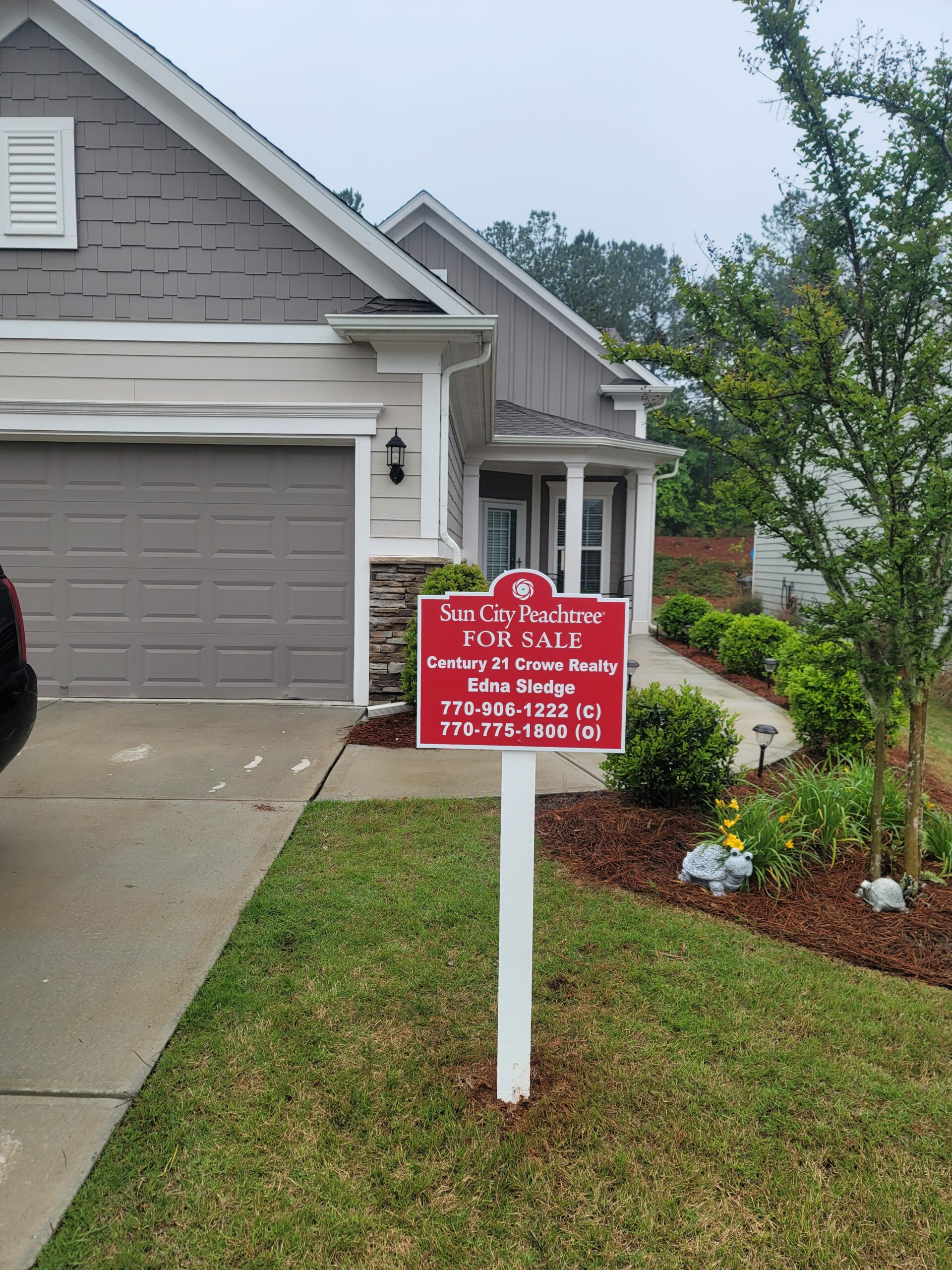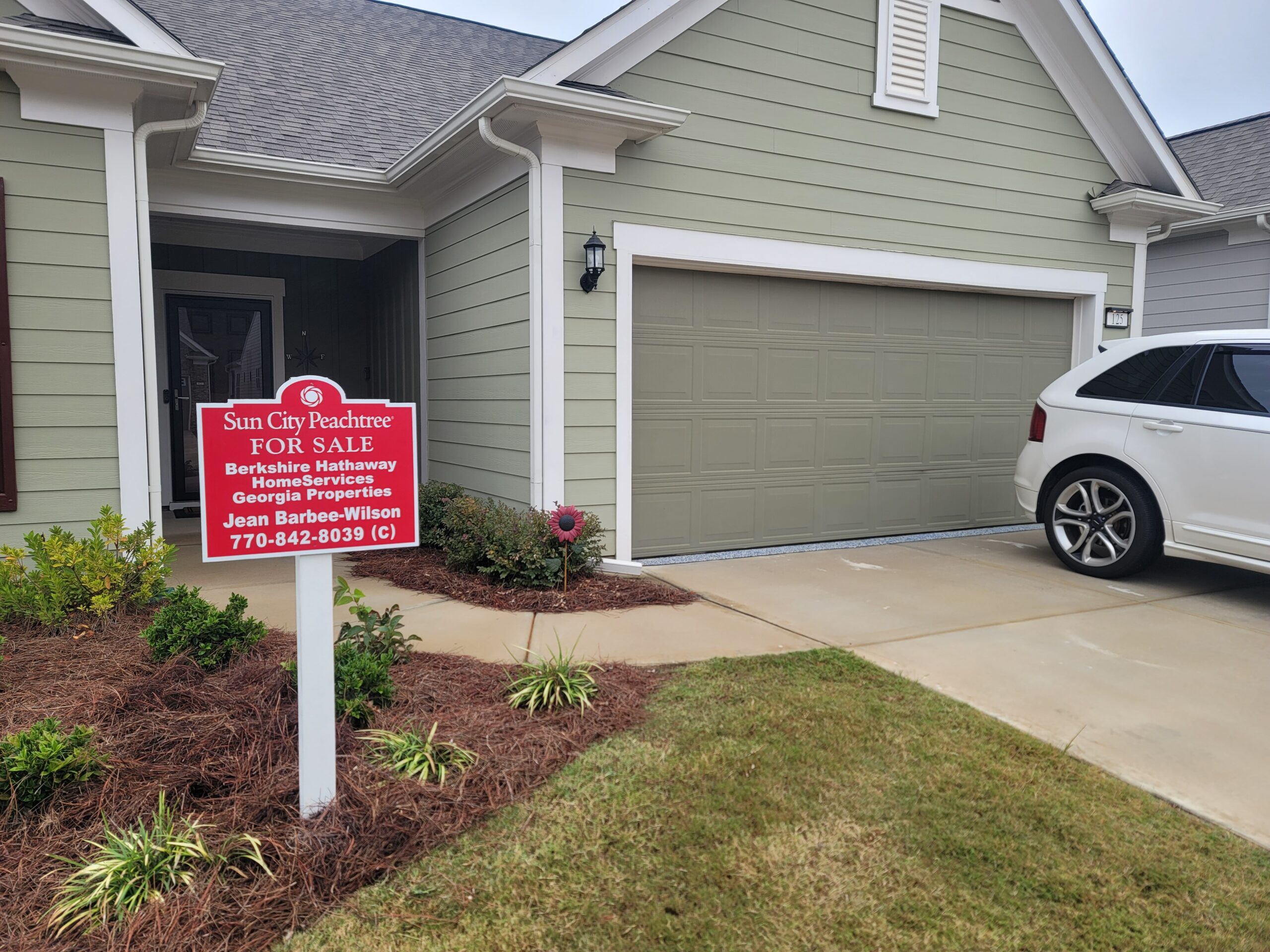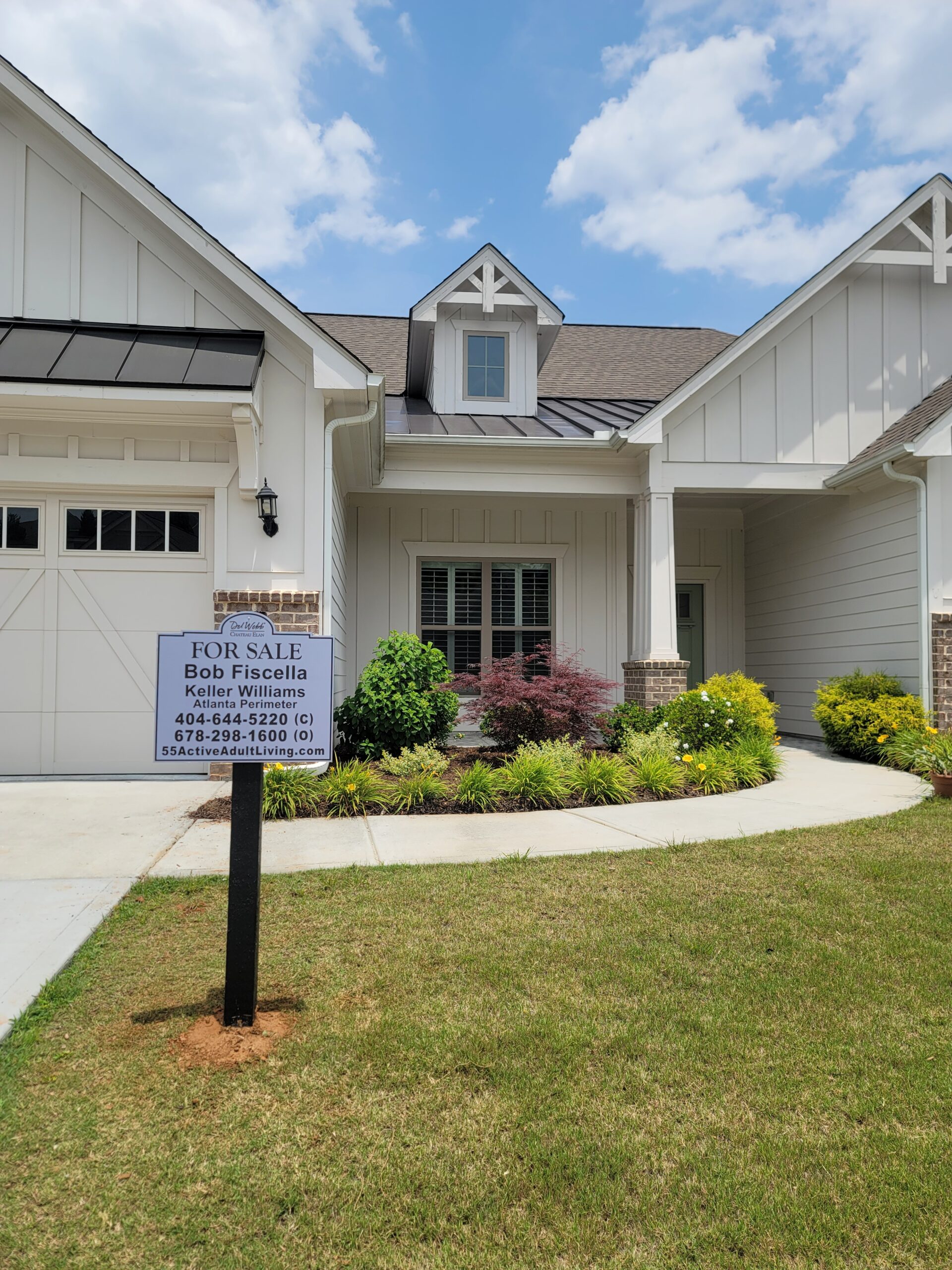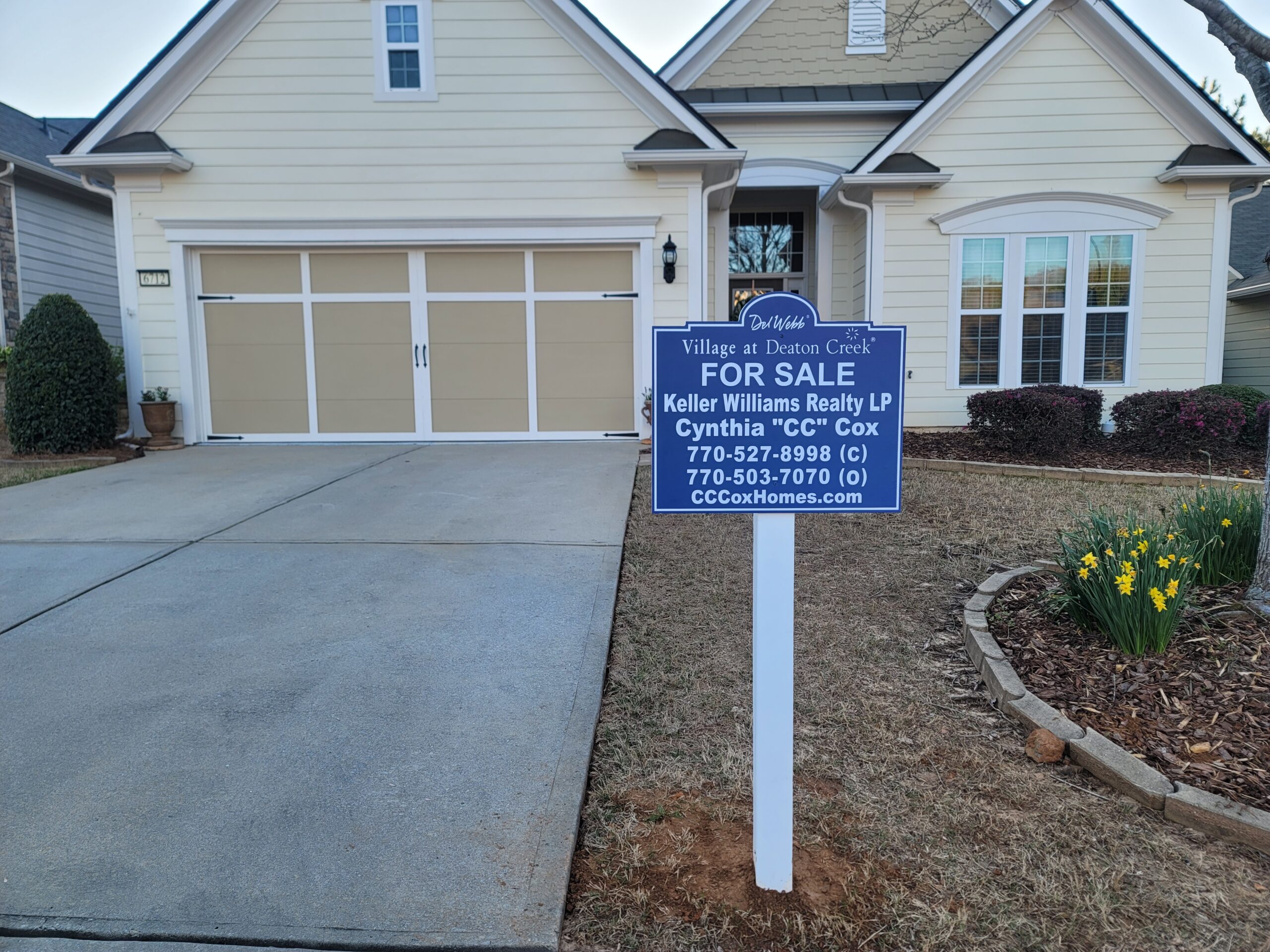Commercial Real Estate Signs
Commercial real estate signs are specialized signage used to promote commercial properties for sale or lease. These signs are designed to attract potential buyers or tenants and provide essential information about the property.
In summary, commercial real estate signs are a vital marketing tool for real estate professionals, designed to maximize visibility and provide essential information about properties. Their customization options and durable materials make them suitable for a variety of commercial real estate needs.
Offering Large and Unique Commercial Real Estate Signs
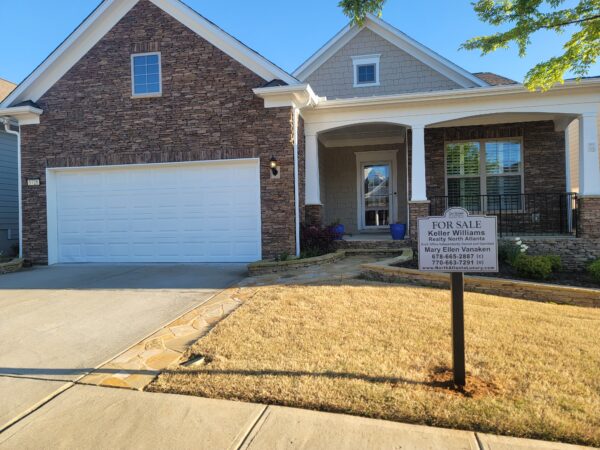
The most important tools in the hands of property experts are large and distinctive commercial real estate signs for marketing properties well and drawing the attention of probable purchasers.
In different sizes, shapes and materials, these signs can be tailored to fit any marketing needs defined.
Characteristics of Large Commercial Real Estate Signs
Size and Visibility: In short, big signs, for example 4 ft. x 8 ft. or 4 ft. x 4 ft., are meant to be seen directly from a long distance hence they are very effective for attracting passersby attention. They have clear graphics because of their large size which also provides more space for important information such as contacts and features about the property.
Customization Options: Many companies produce signs that allow customization depending on specific information needed by real estate agents concerning their properties like asking price or number of bedrooms, etc. Then there are those features that must remain uniform from one sign to another for the agents’ identity to be known easily across all their signals.
Material Durability: Weather-resistant aluminum composite is one of the materials that can be used to make such signs.
Others include MDO plywood or corrugated signboard.The reason why they are preferred is due to their strength and ability to sustain weather patterns without wearing out hence their relevancy till date.
Professional Appearance: People are likely to take seriously agents who use high-quality materials for their marketing including signage, it adds credibility selling properties.People are likely to take seriously agents who use high-quality materials for their marketing including signage, it adds credibility selling properties.
Installation Flexibility: On the other side, the commercial real estate signs themselves can also be fixed in different manners such as placing them on poles or setting them up separately.This therefore enables the agents to put up signs at any strategic and conspicuous points regardless of whether they are busy or quiet streets.
Importance of Unique Design Elements
Eye-Catching Graphics: The usage of vivid graphics alongside contrasting colors can greatly enhance the visibility of a given sign across all territories. Effective color combination makes text to pop out against background so that interested parties may read important messages promptly.
Inclusion of Technology: Latest signs come equipped with QR codes that help in quick access to property listings or other additional information on mobile phones by interested parties.This modern touch increases interaction rates leading to faster inquiries.
Rider Signs: Additionally, having smaller signs other than the main one could act as rider signs used as attention grabbers or highlight special aspects of a property. This customization is also quite effective for further highlighting the core selling points.
In a nutshell: To market properties effectively commercial real estate agents need large and unique signs which are designed in such a manner that they look attractive for potential buyers to see.from the design,size, and materials these signs play a very crucial role in attracting would-be purchasers and communicating that the investment worthwhile when done by anybody within or outside this profession
Types of Commercial Real Estate Signs
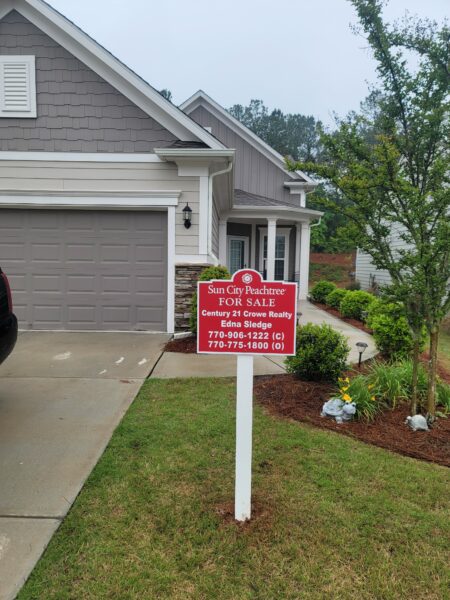
Commercial real estate signs come in various types, each serving distinct purposes and designed for specific visibility and branding needs. Here are some common types of commercial real estate signs:
1. Pylon Signs
Pylon signs are tall, freestanding structures designed to attract attention from drivers. They are often illuminated and can display signage for multiple businesses. These signs are typically placed near major roads and highways to enhance visibility for retail centers, car dealerships, hotels, and shopping malls.
2. Monument Signs
Monument signs are lower-profile signs that are mounted at or near ground level. They are customizable and often feature decorative bases. These signs are suitable for businesses that want a more subtle yet professional appearance, making them ideal for corporate campuses and shopping centers.
3. Post and Panel Signs
Post and panel signs consist of a panel supported by two vertical posts. They are versatile and commonly used for directional signage in various settings, such as apartment complexes and industrial parks. These signs are typically not illuminated and are used for straightforward messaging.
4. Blade Signs
Blade signs are mounted perpendicular to the building’s façade, making them visible to pedestrians. They are often double-sided and can be illuminated, making them effective for attracting foot traffic in urban areas and shopping malls.
5. Channel Letters
Channel letters are individually cut letters that can be illuminated from within. They provide a modern and professional look for storefronts and are often used for branding purposes. Variants include halo-lit and LED channel letters.
6. Wayfinding Signs
Wayfinding signs help guide visitors through complex environments, such as hospitals or large shopping centers. They often include directories or maps and can complement other signage types like monument signs.
7. Electronic Message Signs
These digital signs allow for dynamic messaging and can be updated remotely. They are suitable for businesses that frequently change their promotions or messages, providing high visibility and flexibility.
8. Coroplast and AlumaCore Signs
Coroplast signs are lightweight and economical but less durable, making them suitable for temporary signage. AlumaCore signs combine the lightweight properties of coroplast with aluminum for a more professional appearance and greater durability, making them ideal for long-term use in commercial real estate.
Each type of sign serves different marketing strategies and visibility needs, allowing businesses to choose the most effective signage based on their specific requirements and location.
Commercial Real Estate Sign Sizes
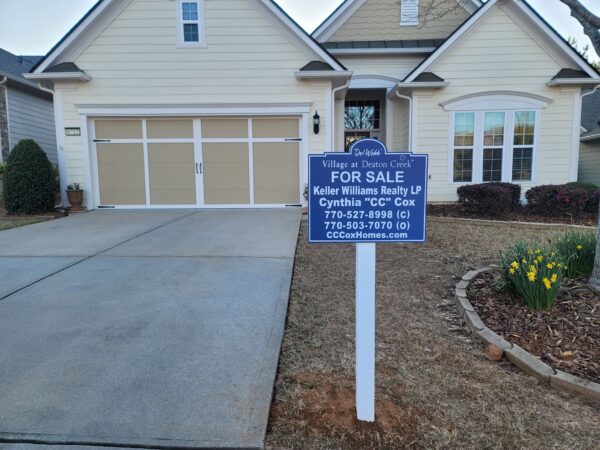
Commercial real estate signs come in various sizes to effectively attract potential buyers and tenants. Here are the most common sizes and their applications:
Standard Sizes
4 ft. x 8 ft.: This size is popular for larger properties and is effective for high visibility from a distance, especially in busy areas.
4 ft. x 4 ft.: A cost-effective option that is commonly used for residential listings and smaller commercial properties. It can be single or double-sided, making it versatile for different viewing angles.
48 in. x 48 in. (4 ft. x 4 ft.): Often used for V-shaped signs, this size is designed to stand out in commercial environments and is effective for catching the attention of passersby.
48 in. x 96 in. (4 ft. x 8 ft.): This larger dimension is also utilized for V-shaped signs, maximizing visibility in high-traffic areas.
24 in. x 36 in.: A common size for yard signs that is suitable for residential properties, providing enough space for essential information without overwhelming the viewer.
24 in. x 30 in. and 18 in. x 24 in.: These sizes are often used for directional signs or smaller property listings, allowing for easy transport and setup.
Additional Options
Rider Signs: Typically 12 in. x 43 in., these can be added to the main sign for additional information, such as agent details or property features.
A-Frame Signs: Commonly sized at 24 in. x 24 in. or 18 in. x 24 in., these are portable and ideal for open house events or directional guidance.
Customization
Imagine Sign Company offers customization options for size, material, and design, allowing real estate agents to tailor their signs to specific properties and branding needs.
The choice of size often depends on the amount of information to be displayed and the visibility required based on the sign’s location
Commercial Sign Materials
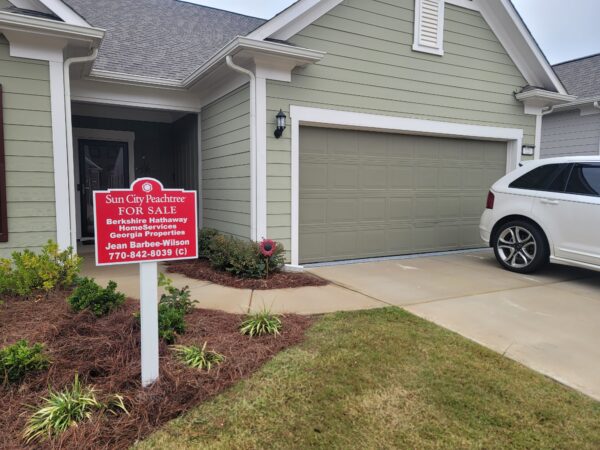
Acrylic is a type of material which is widely used for signs either indoors or outdoors because it is versatile.shatter resistant and also found in different gages. They have been found more suitable for use in lobby displays or wayfinding systems because they are clear and their background can be lit up.
PVC (Polyvinyl Chloride) This is a tough material that can be used in many areas such as real estate advertising boards or any other form of advertisements since it can withstand much. In addition ,it exists in different weights and it is well known for being hard so as to resist shock hence this makes it stay longer .Those particular made out polyvinylchloride are simple to carryout modifications
Aluminum: this has become one type widely preferred among marketers who mostly like outdoor advertisements since it does not rust due to light weight properties apart from other factors making them best like for example construction signs ,parking signs ,regulatory signages among others.aluminum placards are usually printed directly on or decorated with high performance vinyl graphics.
Wood Wooden placards give a traditional as well warm look and feel thus they can be used by companies whose need to create an ambient environment in them. It might be necessary to apply designs on them by engraving so they are fit for either indoor or outdoor purposes but it may need more care as compared to those which are done using other materials.
Corrugated Plastic This material is often used for temporary signs like yard signs or campaign billboards, sometimes referred to as Coroplast. This is a very light sign material that is also water resistant so it can be recycled after the occasion.
Banner Material (Vinyl) Vinyl banners display flexibility in both indoor and outdoor settings. They are particularly effective for events, promotions and temporary signage due to their longevity and high coloration.
Composite Materials (Dibond) for instance Dibond This material though made from two thin aluminium sheets with plastic core offer excellent strength as well as rigidity in comparison with other types of signs hence it an all-weather condition type of material which can be used indoors or outdoors this accounts for why it is usually relied on in trade shows; and exhibitions because of its superior smoothness when using printing press.
Plastics (plastic materials) – lightweight yet tough they weather well without experiencing fading, cracking or peeling off as is witnessed on other substrates exposed outside. They are particularly good for outdoor signs.
Conclusion
Selecting the right commercial signage material includes taking into account aspects such as where in a business they will be located and how long they will be there. All materials have their own advantages therefore it is important that one that matches the decor preference and operation needs is selected.
Example of
our works
Our professional staff can help design your sign and help determine the material, size, color and location of your business sign based on the scope of your event or project. Most projects can be designed and produced within a week. More complex projects will require our expert advice and project management to meet completion deadlines.
Frequently Asked
Questions
What are commercial real estate signs made of?
It is crucial to have in mind the intended application of a sign while choosing materials for commercial signage (indoor /outdoor) this factors should be considered such as durability, appearance as well as price.
Examples of common materials include:
Common Sign Materials
Acrylic is a type of material which is widely used for signs either indoors or outdoors because it is versatile.shatter resistant and also found in different gages..They have been found more suitable for use in lobby displays or wayfinding systems because they are clear and their background can be lit up.
PVC (Polyvinyl Chloride): This is a tough material that can be used in many areas such as real estate advertising boards or any other form of advertisements since it can withstand much. In addition ,it exists in different weights and it is well known for being hard so as to resist shock hence this makes it stay longer .Those particular made out polyvinylchloride are simple to carryout modifications
Aluminum: this has become one type widely preferred among marketers who mostly like outdoor advertisements since it does not rust due to light weight properties apart from other factors making them best like for example construction signs ,parking signs ,regulatory signages among others.aluminum placards are usually printed directly on or decorated with high performance vinyl graphics.
Wood: Wooden placards give a traditional as well warm look and feel thus they can be used by companies whose need to create an ambient environment in them. It might be necessary to apply designs on them by engraving so they are fit for either indoor or outdoor purposes but it may need more care as compared to those which are done using other materials.
Corrugated Plastic: This material is often used for temporary signs like yard signs or campaign billboards, sometimes referred to as Coroplast. This is a very light sign material that is also water resistant so it can be recycled after the occasion.
Banner Material (Vinyl): Vinyl banners display flexibility in both indoor and outdoor settings. They are particularly effective for events, promotions and temporary signage due to their longevity and high coloration.
Composite Materials (Dibond) for instance Dibond This material though made from two thin aluminium sheets with plastic core offer excellent strength as well as rigidity in comparison with other types of signs hence it an all-weather condition type of material which can be used indoors or outdoors this accounts for why it is usually relied on in trade shows; and exhibitions because of its superior smoothness when using printing press.
Plastics (plastic materials) – lightweight yet tough they weather well without experiencing fading, cracking or peeling off as is witnessed on other substrates exposed outside. They are particularly good for outdoor signs.
Conclusion
Selecting the right commercial signage material includes taking into account aspects such as where in a business they will be located and how long they will be there. All materials have their own advantages therefore it is important that one that matches the decor preference and operation needs is selected.
What does commercials mean in real estate?
Commercial real estate refers to properties that are used for business purposes rather than residential living. This category encompasses a variety of property types, including office buildings, retail spaces, warehouses, and industrial sites. The primary function of commercial real estate is to generate income, either through leasing the space to businesses or operating a business on the property itself.
How much time does it take to design commercial real estate sign?
The time it takes to design a commercial real estate sign can vary significantly depending on several factors, including the complexity of the design, the specific requirements of the sign, and the responsiveness of the client.
Design Time Estimates
Initial Design Phase:
For simpler signs, such as basic vinyl or banners, the design can take as little as 5 to 10 minutes if the client provides the artwork. For more complex designs, such as channel letters or detailed property signs, the design time can extend to 1 to 2 hours on average.
Approval Process:
Once a design proof is created, it is sent to the client for review. This stage can vary widely based on how quickly the client provides feedback or requests revisions.
Production Time:
After the design is approved, production can take anywhere from 1 to 3 weeks depending on the sign type. For example, standard commercial real estate signs may be produced quickly, while more intricate designs could take longer due to fabrication processes.
Total Timeframe
Considering all stages—from initial design to final installation—the entire process for a commercial real estate sign can range from a few days to several weeks. For straightforward projects with quick client feedback and approval, it could be as short as 1 week.
However, for more complex signs requiring detailed design and permitting, it could extend to 3 weeks or more.In summary, while simple designs can be completed quickly, the overall timeline will depend heavily on client interaction and the complexity of the sign.

